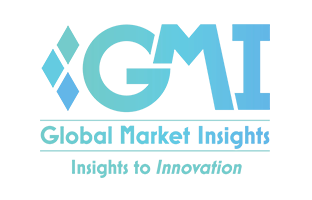Asia Pacific Captive Petroleum Refinery Hydrogen Generation Market Growth
Key Ideas
- The Asia Pacific captive petroleum refinery hydrogen generation market was valued at USD 18.6 billion in 2023 and is expected to grow at a CAGR of 6.7% between 2024 and 2032.
- Hydrogen is produced through processes like steam methane reforming and electrolysis to meet refinery needs, enhancing self-sufficiency and reducing dependency on external suppliers.
- The market is driven by the need for cleaner fuel production to comply with environmental regulations, leading to increased adoption of on-site hydrogen generation processes.
- Renewable energy sources like solar and wind energy are being increasingly integrated into hydrogen production, enabling sustainable and cost-effective methods for refineries.
The Asia Pacific captive petroleum refinery hydrogen generation market is flourishing, with a current value of USD 18.6 billion in 2023 and an expected growth rate of 6.7% between 2024 and 2032. This market involves the on-site production of hydrogen exclusively for use within petroleum refineries. Processes like steam methane reforming and electrolysis are employed to generate hydrogen, fulfilling various refinery operations such as desulfurization and hydrocracking.
Refineries are increasingly adopting captive hydrogen generation to enhance self-sufficiency, reduce reliance on external suppliers, and ensure a stable supply for their operations. The shift towards producing low-carbon fuels to comply with strict environmental regulations is a significant driver for the market's growth.
Advancements in hydrogen production technologies, particularly in electrolysis and steam methane reforming, are contributing to market expansion. These innovations are making the process more efficient and economical, allowing refineries to optimize their hydrogen production processes.
An emerging trend in the market is the integration of renewable energy sources like solar and wind energy for electrolysis, enabling sustainable hydrogen production. Companies are also exploring the utilization of byproducts from other refining processes as feedstock, reducing overall production costs and enhancing business sustainability.
The market analysis segments the Asia Pacific captive petroleum refinery hydrogen generation market based on processes such as electrolysis, steam reformer, and others. Electrolysis is projected to exceed USD 3 billion by 2032, driven by advancements in technology and government incentives. In China, the market is expected to grow over USD 13 billion by 2032, fueled by a shift to cleaner alternatives and increasing domestic demand for clean energy.
In the U.S., the focus on energy independence and stringent fuel standards are driving the adoption of efficient hydrogen generation processes in refineries. Companies are investing in market development and education initiatives to promote the benefits of captive hydrogen generation. Major players in the market include Air Products and Chemicals, Air Liquide, BASF, GAIL Limited, and Next Hydrogen, among others.
Topics
Asia
Renewable Energy
Technology
Sustainability
Investment
Industry Growth
Market Analysis
Environmental Regulations
Business Outlook
Latest News
